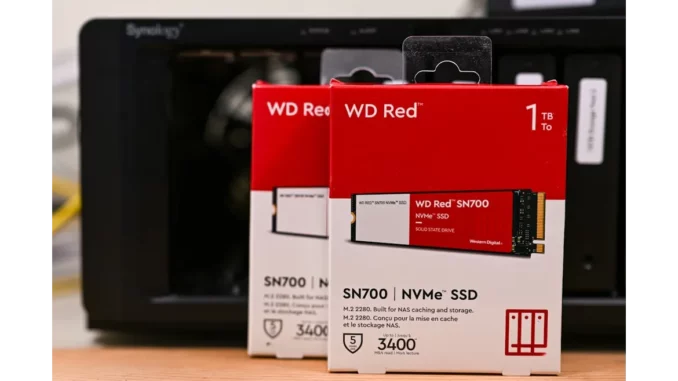
Summary
From small offices to enterprise giants, TrueNAS has a storage solution to fit your needs.
Efficient Data Management: Optimising Your Synology NAS Setup
Diving into the realm of Network Attached Storage (NAS) with a Synology device presents numerous opportunities for efficient data management, but requires careful setup to fully leverage its potential. From understanding storage needs to advanced configurations, Synology NAS devices offer a comprehensive range of features tailored to both personal and professional use. “It’s essential to approach your NAS setup with a clear understanding of your goals and requirements,” suggests Alex Turner, a seasoned industry observer. This article guides new users through the initial setup and explores advanced features to enhance the NAS experience.
Main Article
Navigating the setup of a Synology NAS involves several critical steps that ensure optimal functionality and long-term satisfaction. Synology’s devices are celebrated for their versatility, serving as data storage solutions, media servers, and private clouds. To unlock these capabilities, users must begin with a well-planned approach.
Understanding Storage and Hardware Needs
Before diving into the technical setup, evaluating your storage needs is crucial. Determine the types of files you will store—be it documents, photos, videos, or backups. This assessment will guide your choice of a suitable Synology model, each varying in capacity and features. Opting for slightly more storage than currently needed is prudent, allowing room for future data growth.
The selection of hard drives is another pivotal consideration. NAS-specific drives like the Western Digital Red or Seagate IronWolf are recommended for their durability and compatibility with RAID configurations. “The choice of hard drives significantly impacts the reliability and efficiency of your NAS,” comments Liam Roberts, an industry analyst. Decide on a RAID setup that aligns with your requirements. RAID 1 offers redundancy, while RAID 5 strikes a balance between performance and data safety.
Network Configuration and Security
Integrating the NAS into your network requires a robust infrastructure to support it. A gigabit Ethernet connection is ideal to ensure smooth data transfer. For enhanced bandwidth and redundancy, consider link aggregation if your router supports it.
Security is paramount, particularly for remote access. Start by changing the default admin password and establishing user accounts with specific permissions. Activate the device’s firewall and configure IP blocking to safeguard against unauthorised access. For remote connectivity, a VPN is advisable. Synology’s integrated security measures, such as two-factor authentication and encrypted folders, offer additional protection layers.
Backup and Application Utilisation
Despite the NAS’s reliability, a comprehensive backup strategy is indispensable. Synology’s Hyper Backup facilitates regular data backups to external drives or cloud services, guarding against hardware failures, accidental deletions, or cyber threats. Adhering to the 3-2-1 backup rule—three data copies, on two different media, with one offsite—is recommended.
Exploring Synology’s suite of applications can significantly enhance your NAS’s functionality. From Synology Drive for file syncing to Video Station for media streaming, these tools can transform your NAS into a versatile asset for diverse tasks.
Regular Maintenance for Longevity
Routine maintenance is crucial for sustaining NAS performance. Schedule regular firmware updates to benefit from the latest features and security enhancements. Monitor hard drive health through built-in S.M.A.R.T. tests, replacing drives showing signs of wear.
By following these initial steps, users can maximise their Synology NAS’s potential, ensuring a seamless experience whether for personal use, media streaming, or professional data management.
Detailed Analysis
The advent of NAS devices like Synology’s has revolutionised data management by providing a centralised, accessible, and secure storage solution. This is increasingly important in a digital landscape where data volumes are expanding rapidly. Synology NAS devices cater to a broad audience, from tech-savvy individuals to small businesses, offering scalability and customisability.
Industry trends indicate a growing demand for personal cloud solutions as users seek more control over their data amidst rising privacy concerns. “The shift towards personal data management solutions is a response to both increasing digital footprints and the need for privacy,” notes Olivia Bennett, an industry commentator. Synology’s robust security features align with this trend, providing users confidence in data safety.
Furthermore, the integration of cloud services with NAS systems underscores the hybrid approach many users now favour, balancing local storage with cloud accessibility. This flexibility is crucial in today’s fast-paced digital environment where data accessibility and security are paramount.
Further Development
As Synology continues to innovate, users can anticipate enhanced features and integrations that further streamline data management. Future developments may include more intuitive user interfaces, expanded application ecosystems, and deeper integration with emerging technologies such as artificial intelligence and machine learning.
Stay tuned as we delve deeper into these advancements, exploring how they will shape the future of personal and professional data management. For further insights and detailed coverage, continue following our updates on Synology’s evolving landscape.

